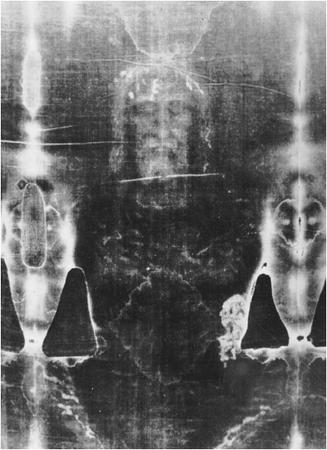
A physics professor has persuaded an Oxford laboratory to revisit the question of the age of the Shroud of Turin, the reputed burial shroud of Jesus Christ. The professor argues that carbon monoxide contaminating the shroud could have distorted its radiocarbon dating results by more than 1,000 years.
In 1988 and 1989 scientists at three laboratories drew on the results of radiocarbon dating to conclude that the shroud was a medieval forgery. They dated its creation to between 1260 and 1390 AD.
The Denver Post reports that John Jackson, a physics lecturer at the University of Colorado at Colorado Springs, has hypothesized that even minimal contamination of the shroud by environmental carbon monoxide could have skewed the dating by 1,300 years.
Professor Christopher Ramsey, head of the Oxford University Radiocarbon Accelerator Unit, has agreed to test Jackson’s hypothesis. Ramsey said that other forensic and historical evidence indicates the shroud is much older than radiocarbon dating results initially indicated.
"Science still has much to tell us about the shroud," said Jackson, a devout Catholic who heads the Colorado Springs-based Shroud of Turin Center. "If we are dealing with the burial cloth of Christ, it is the witness to the birth of Christianity. But my faith doesn't depend on that outcome," he told the Denver Post.
Jackson must prove a viable pathway for carbon monoxide contamination. He is working with Oxford to test linen samples subjected to various conditions the shroud has experienced, including outdoor exhibitions and exposure to extreme heat during a fire in 1532.
In 1978, Jackson led a research team given unprecedented access to the shroud. The team determined that the shroud was not painted, dyed or stained.
The Shroud of Turin bears faint brown discolorations that form the negative image of a man. A positive image of the shroud was produced only with the arrival of modern photography.
Forensic data indicates the bloodstains on the shroud are real and were stained on the cloth before the image of the body appeared, the Denver Post reports. Stains around the head are consistent with punctures by thorns, while the scourge marks are consistent with those made by a Roman whip. A large puncture wound on the man’s side is also consistent with that made by a Roman spear.
Though medieval iconography portrays Jesus nailed to the cross through his palms and the front of his feet, archaeologists have found the bones of a Roman crucifixion victim nailed through the wrists and heels.
There is no consensus regarding what medieval methods, if any, could have created the shroud.
Though the Vatican keeps the shroud locked in a protective chamber at the Cathedral of St. John the Baptist in Turin, Italy, the Catholic Church makes no claims about its authenticity.
Though the Vatican keeps the shroud locked in a protective chamber at the Cathedral of St. John the Baptist in Turin, Italy, the Catholic Church makes no claims about its authenticity.
From: Catholicnewsagency.com


No comments:
Post a Comment